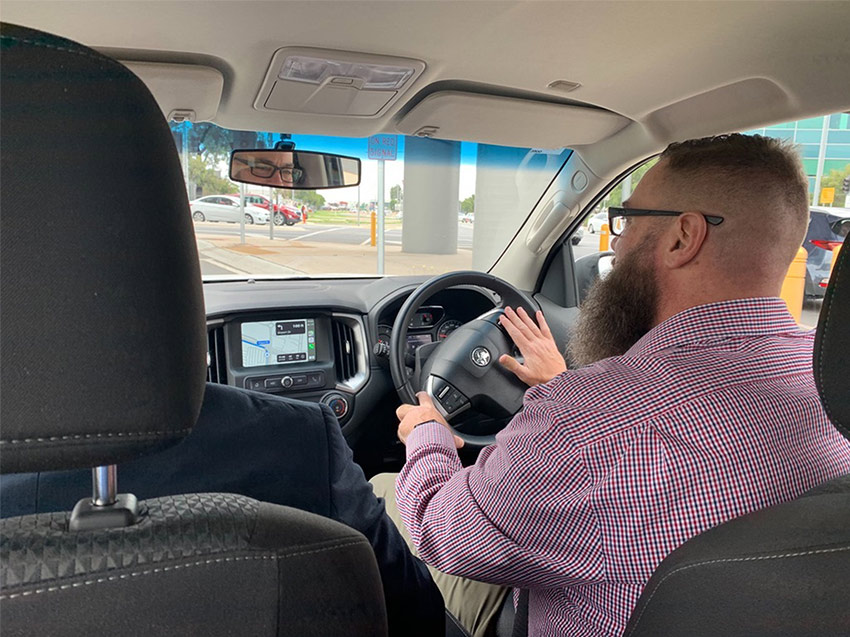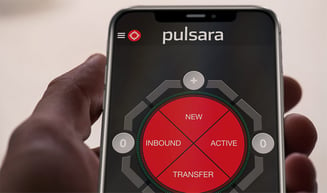Pulsara Around the World - 2025 Recap and January 2026
December Recap After an incredibly busy events year with 102 conferences, trade shows, and sponsorships, December was on the slower side for us, with...
2 min read
 Team Pulsara
:
Sep 11, 2020
Team Pulsara
:
Sep 11, 2020

EDITOR'S NOTE: Special thanks to Scott Stanley for writing today's blog post. You can connect with him on LinkedIn.
In January of this year, I was afforded the opportunity to travel to Australia to work with a new client and bring them on to our platform. I made sure I had all of my travel documents, a comfortable neck pillow for the 15-hour flight, and plenty of movies downloaded on my iPad. When we landed in Melbourne, I was all smiles as I experienced what an amazing country Australia is for the first time. My co-worker asked if I minded driving first, and I said not at all. I opened the door on the left side of the SUV to get in, and to my surprise, there was no steering wheel. Yup, in Australia, you sit on the right side of the vehicle and drive on the left side of the road—the opposite of what I'm used to in the United States.

But is the experience really all that different? The function is similar and familiar, while also new and a little unnatural. I turned the windshield wipers on about 10 times when I was trying to put on the turn signal, before I got used to them being on the opposite side of the steering wheel from what I was used to. After a few days, though, I had adjusted, and it felt natural. That was my new norm.
As we change how we communicate patient information, moving away from phone calls and radio reports to mobile technology, it may feel similar to being in a foreign country on the opposite side of the road. You are still communicating vital patient information from one person to another, but the vehicle is different. Mobile technology will save you lots of time, energy, and frustration in the long run, but much like climbing in on the opposite side of the car, it can be pretty intimidating at first.
If this is you: don’t worry. It is difficult to let go of your old processes in favor of new ones. Learning to rely on new technology takes some adjusting and may be uncomfortable at first, but those feelings will go away as you find your way around the new platform. You’re still going through the familiar, intuitive process of communicating patient information, but it’s doing so in a way that will ultimately help you deliver better patient care through more efficient processes.
 Once you become familiar with the location of the buttons, which fields are required, and pertinent information to share, this becomes the new norm. Sure, it may be frustrating at first, and take a few times not to “crash the car,” but eventually it feels natural. And once it does, you’ll really start to see how much more efficient and effective your processes are, thanks to the newer technology.
Once you become familiar with the location of the buttons, which fields are required, and pertinent information to share, this becomes the new norm. Sure, it may be frustrating at first, and take a few times not to “crash the car,” but eventually it feels natural. And once it does, you’ll really start to see how much more efficient and effective your processes are, thanks to the newer technology.
If you've just come on board with Pulsara, implementation and dual-process is a perfect time to test drive Pulsara around the parking lot to get a feel for the vehicle before taking it out on the road for the first time.
Our comfort zone is just that: comfortable. It prevents us from exploring new lands and having amazing experiences. Or, in the case of healthcare communication, it can cause us to avoid change that will improve our processes. So when confronted with change, don’t hesitate to jump in on the right side of the vehicle and drive on the opposite side of the road. The new adventures are limitless. Cheers!
For more on change management in replacing old communication methods with mobile technology, check out our post on Embracing Rapid Change in Medicine.

December Recap After an incredibly busy events year with 102 conferences, trade shows, and sponsorships, December was on the slower side for us, with...

Editor's Note: In July 2025, EMS1 and Fitch & Associates released their annual EMS trend survey, What Paramedics Want, proudly sponsored by Pulsara....
![[PRESS RELEASE] Published Research Finds Up to 31% Faster STEMI Treatment Times in Rural Hospital Setting with Pulsara](https://www.pulsara.com/hubfs/_1_website-page-blog-assets/pulsara-hosp-teams-assign-cardio-stemi-rn-1200x701.jpg)
Published research shows how using Pulsara, alongside standardized field activation and a focus on stakeholder relationships, improves STEMI care and...